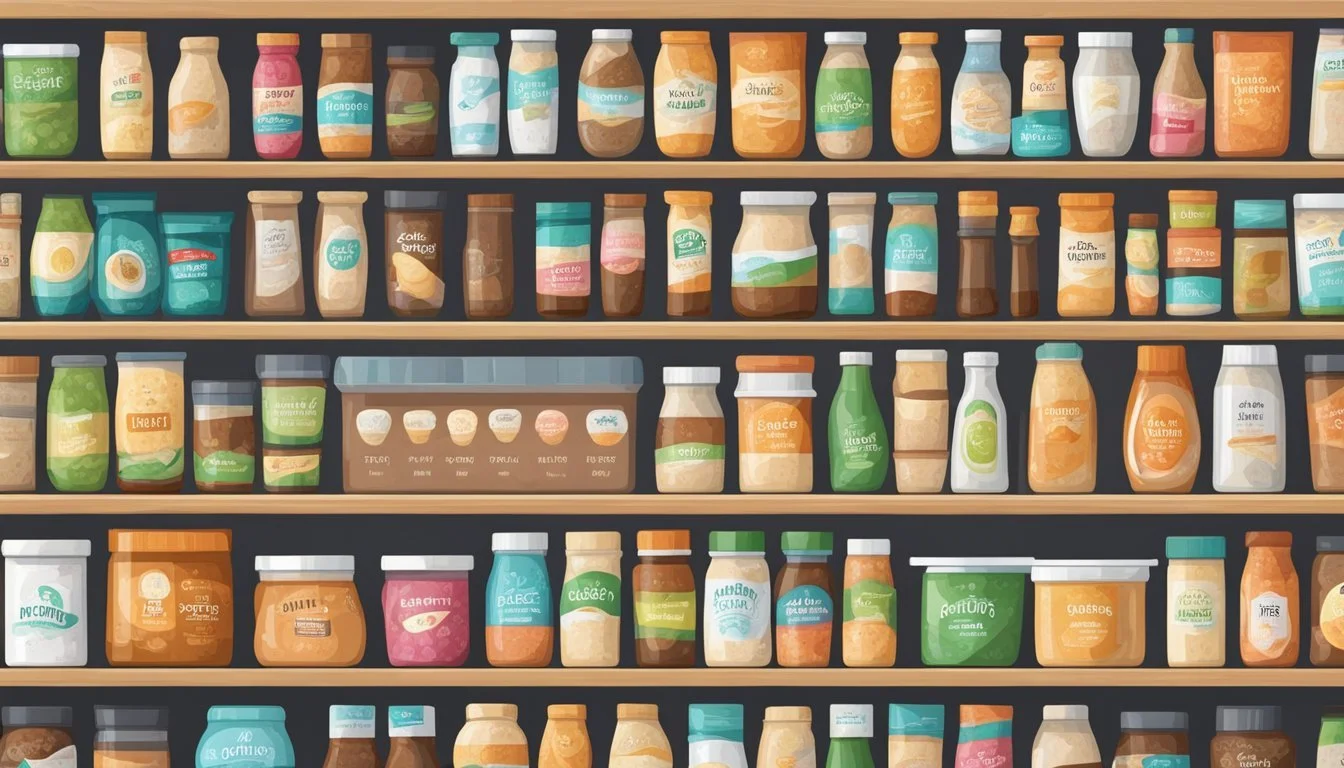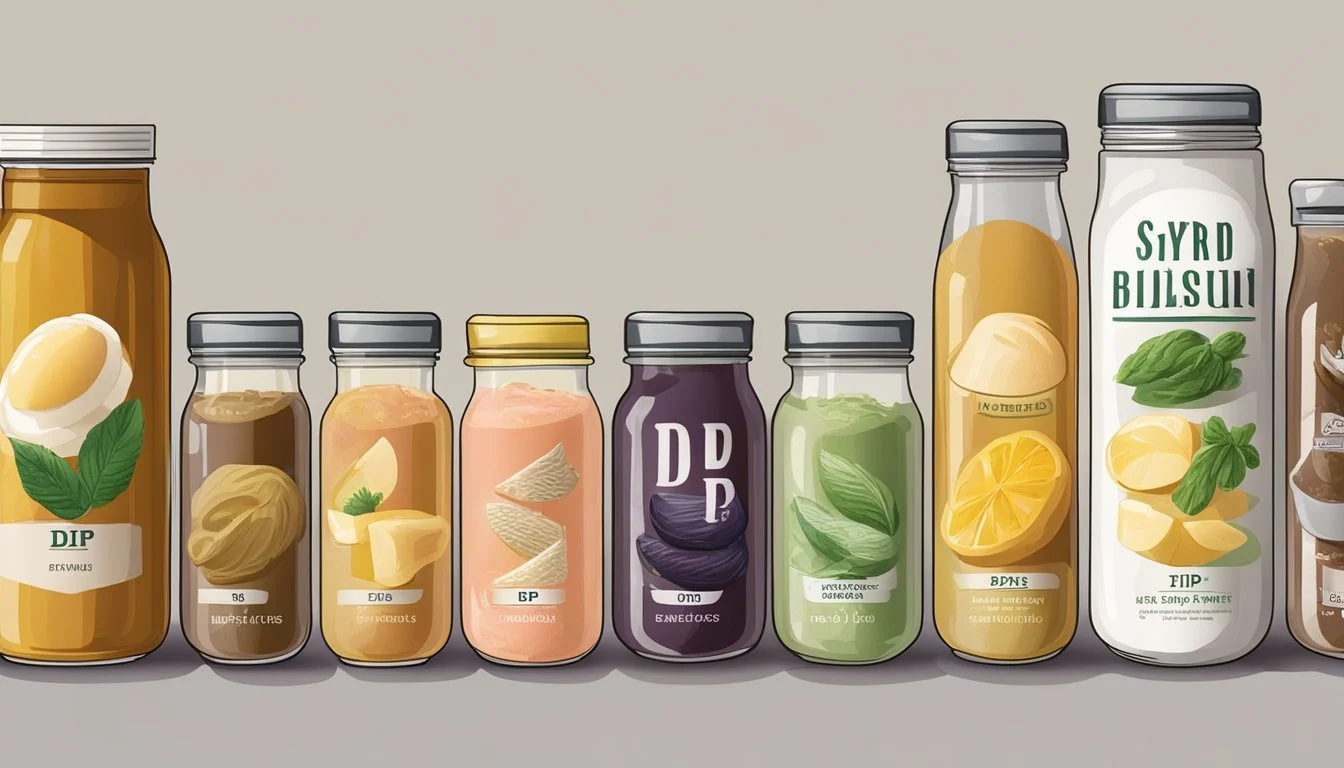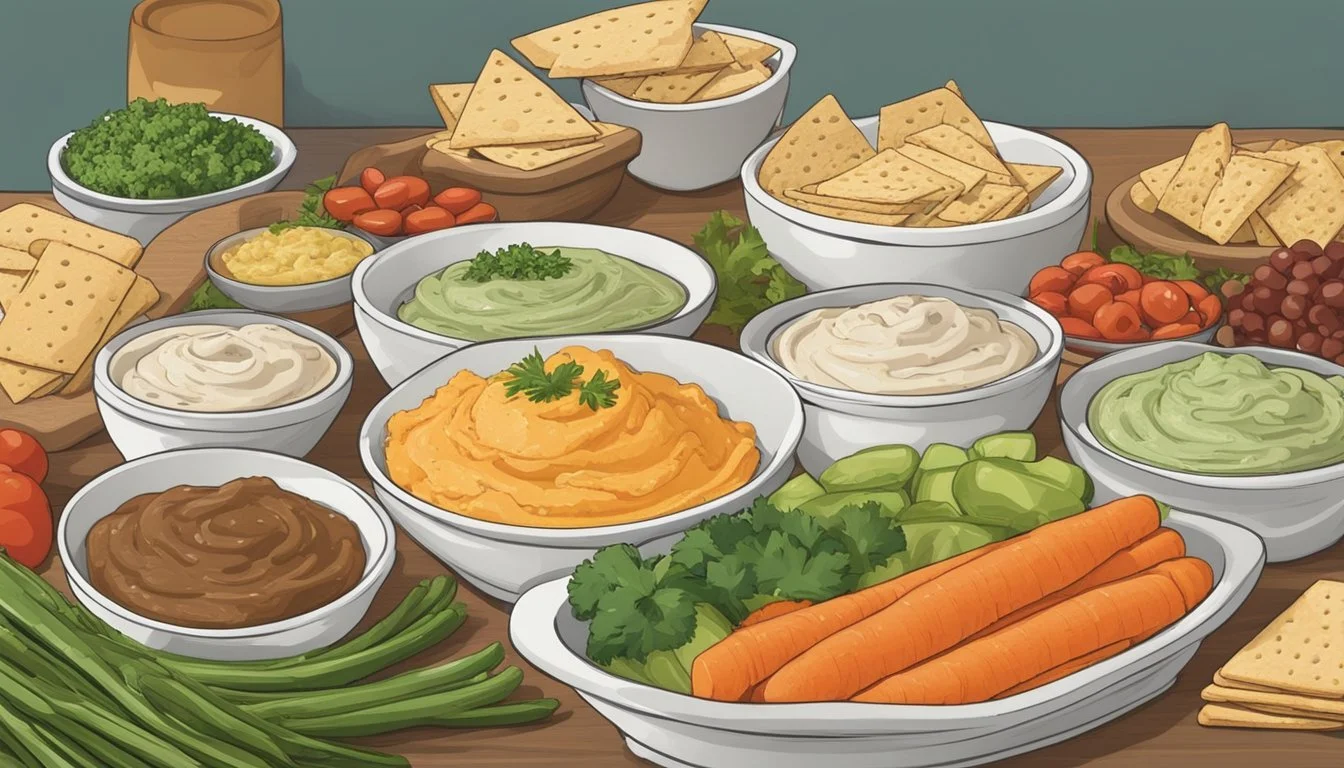How Long Do Pre-Made Dips Last?
Understanding Shelf Life and Storage
When purchasing pre-made dips, consumers often wonder about their shelf life and how long they can enjoy the product at optimal quality. Shelf life varies widely among different types of dips, as ingredients and preservation methods affect their longevity. A key factor influencing shelf life is whether the dip is dairy-based or has a tomato base, as these two categories tend to have different preservative qualities.
The quality of a dip over time is influenced by how it's stored. Pre-made dips that have been pasteurized and sealed in a low-oxygen environment can last a considerable amount of time unopened. However, once the seal is broken, the shelf life shortens significantly due to exposure to air and potential contaminants. It is generally observed that dairy-based dips last approximately 7 to 10 days in the refrigerator after opening, as long as they are stored properly.
In contrast, dips with acidic bases like tomato have a different shelf life. These dips might not require refrigeration until opened, after which they must be refrigerated to maintain quality. It's crucial to always store dips in airtight containers to minimize oxidation and slow down the spoilage process. Observing the dip for any changes in smell, texture, or color can help determine its freshness and suitability for consumption.
Understanding Dip Preservation
When considering the preservation of pre-made dips, it's essential to understand the role of ingredients, temperature, and packaging in extending shelf life.
Types of Dips and Their Ingredients
Pre-made dips can be categorized based on their primary ingredients. Dairy-based dips, for instance, typically contain products like sour cream or cheese. The presence of dairy necessitates refrigeration to prevent the growth of harmful bacteria. Non-dairy dips, such as those tomato-based, may not require immediate refrigeration but should be stored in a refrigerated environment once opened to maintain freshness.
Dairy-Based Dips: Must be kept refrigerated.
Non-Dairy Dips: May be stored at room temperature unopened; refrigerate after opening.
Role of Temperature in Preservation
Temperature plays a crucial role in preserving the quality and safety of pre-made dips. All dips should not be left at room temperature for more than two to three hours to prevent bacterial growth. Once opened, pre-made dips should be refrigerated if not consumed within this time frame. Proper food storage guidelines suggest that a refrigerated dip can remain safe for consumption for up to 3 weeks, depending on the dip.
Safe Temperature: Below 40°F (4°C) in the refrigerator.
The Impact of Packaging
Packaging is vital for prolonging the shelf life of pre-made dips. An unopened dip can last quite long, ranging from months to years, before the expiration date visible on the label. However, after opening, it's recommended that dips be stored in an airtight container to prevent oxidation and contamination. Store-bought dips often come with a label that provides food storage information, including the best-by date.
Unopened Dip: Check the label for expiration date.
Opened Dip: Store in an airtight container; consume within 5-7 days.
Refrigeration and Freezing Techniques
Proper refrigeration and freezing techniques are essential for extending the lifespan of pre-made dips while maintaining their quality. The following subsections provide specific methods for the refrigeration and freezing of various dips.
How to Refrigerate Dips
When refrigerating dips, one must ensure they are stored at a constant temperature typically below 40°F (4°C), within the fridge's coldest part to prolong their freshness. Dairy-based dips, such as those incorporating sour cream or cheese, are best kept for 3 to 4 days and should be placed in airtight containers to prevent contamination and odor absorption.
For dairy-based dips:
Place dips in the coldest part of the refrigerator.
Use airtight containers to minimize exposure to air.
How to Freeze Dips
Not all dips are suitable for freezing, as freezing can significantly alter the texture and taste, especially for dairy products. Those considering freezing should opt for cheese dips without mayonnaise or dairy bases, as they freeze better. Dip should be portioned into usable amounts before freezing and stored in freezer-safe containers or bags. Squeeze out excess air, label with the date, and note that most dips can be frozen for 2 to 3 months for optimal quality.
Cheese dips (suitable for freezing):
Portion into small batches.
Store in freezer-safe containers or bags.
Label with the freezing date.
Defrosting Frozen Dips
To safely thaw frozen dips, one should transfer them from the freezer to the refrigerator, allowing them to thaw slowly — a process that can take several hours to overnight, depending on the size of the dip container. For quicker defrosting, one may choose to place the dip in a leak-proof bag and submerge it in cold water, changing the water every 30 minutes to ensure proper temperature control. Never thaw dips at room temperature as it can promote bacterial growth.
To thaw dips:
Refrain from defrosting at room temperature.
Thaw in the fridge or use a cold-water bath with water changed every 30 minutes.
Identifying Spoilage
When assessing pre-made dips for spoilage, one should pay close attention to visual and olfactory indicators, changes in texture and consistency, and be aware of the risks associated with consuming spoiled products.
Visual and Olfactory Indicators
Visual and olfactory indicators are often the first signs of spoilage in pre-made dips. Mold, which can appear as fuzzy spots of various colors, is a clear indication that the dip should not be consumed. An off odor, another decisive sign, may present itself as a sour or unpleasant smell distinct from the dip's original fragrance.
Texture and Consistency Changes
Spoiled dips may exhibit noticeable changes in texture and consistency. For instance, a dip that has separated, become unusually runny, or developed a curdled appearance has likely gone bad. These changes can indicate that harmful bacteria have proliferated in the dip, leading to spoilage.
Risks of Consuming Spoiled Dips
Consuming dips that have spoiled poses health risks due to the potential presence of harmful bacteria that can cause food poisoning. Signs of spoilage, such as mold and off odors, must be regarded seriously to avoid the ingestion of bacteria like salmonella and E. coli, which are commonly linked to spoiled food products.
Maintaining Dip Quality
To ensure your dip remains fresh and tasty, it's crucial to adhere to proper storage methods and understand its shelf life. This section will elucidate how one can maintain the quality of store-bought and homemade dips.
Best Practices for Storage
Storing dips correctly is paramount in prolonging their freshness and ensuring their safety for consumption. For dairy-based dips like those containing sour cream or cheese, they should be kept refrigerated at 40°F (4°C) or below. Exposure to air should be minimized to preserve flavor and prevent contamination—after each use, dips should be sealed tightly.
For dips containing fresh ingredients such as herbs and vegetables, one should ensure they are consumed promptly while the items are still fresh. If dips are made with acidifying agents such as lemon juice or vinegar, it may help deter the growth of bacteria, but these dips should still be stored with care.
To Summarize Storage:
Temperature: Keep dips refrigerated at 40°F (4°C) or below
Air Exposure: Seal dips tightly to limit contact with air
Fresh Ingredients: Use dips with fresh components early for best quality
Extending the Shelf Life of Dips
Maintaining the quality of the dip for the longest possible time involves understanding what factors affect their shelf life. Preservatives in store-bought dips can extend longevity, but homemade dips might spoil quicker due to lack of these additives. Adding an acid component, for example, vinegar or lemon juice, can naturally extend the shelf life of homemade dips. However, if the dip's flavor changes or you observe any signs of spoilage, it is best to discard the product to prevent any foodborne illnesses.
To Extend Shelf Life:
Preservatives: Note that dips with preservatives last longer
Acidity: Slightly acidic dips may stay fresh longer
Inspect: Discard dips if quality or safety is compromised
Understanding Expiration Dates
Expiration dates are crucial indicators of how long a dip will remain safe to eat and retain its quality. They should be observed strictly for dairy-based dips especially, as they are susceptible to spoilage and can pose health risks if consumed past these dates. Unopened commercial dips can last from 1 to 2 years with intact quality if stored properly, whereas homemade dips typically last around 3 to 7 days in the refrigerator. Always check the quality before serving, as dips can degrade faster depending on the ingredients and storage conditions.
Regarding Expiration Dates:
Safety: Follow expiration dates to ensure dips are safe to consume
Commercial vs. Homemade: Pre-packaged dips generally last longer than homemade
Quality Check: Assess the dip's flavor and appearance regularly
Preventing Dip Contamination
When it comes to pre-made dips, keeping them uncontaminated is essential for maintaining their freshness and preventing the growth of harmful microorganisms. Two crucial steps in achieving this are avoiding cross-contamination and proper handling of leftovers.
Avoiding Cross-Contamination
To ensure the longevity and safety of pre-made dips like cream cheese (how long does cream cheese last?) or cheese dip, one must prevent the transfer of bacteria from different foods. Here are specific measures to take:
Use Separate Utensils: Always provide separate serving utensils for each dip to avoid mixing them.
Designate a Topping Area: If dips are to be used with toppings, set a separate space for fresh vegetables or other toppings to prevent them from directly contacting the dip.
Educate on Double-Dipping: At a party, make it clear that double-dipping is off-limits, as saliva can introduce bacteria into the dip, significantly accelerating spoilage.
Handling Leftovers
After an event, leftover dip requires careful handling to stay safe for future consumption.
Prompt Storage: Leftover dip should be refrigerated within two hours of being left out. If unsure about the duration, it's safer to dispose of the dip.
Airtight Containers: Store leftover dip in airtight containers to minimize exposure to air and bacteria.
Stir Before Reuse: Stir the dip before serving again, as this can help to evenly distribute any separation that has occurred.
Label and Date: Always label the container with the date of storage to keep track of its freshness.
Diligent attention to these details will help keep pre-made dips safe to enjoy even after the initial serving.
Specific Dip Varieties
When exploring the longevity and storage of pre-made dips, it's essential to focus on specific types as ingredients and preservation methods vary, impacting shelf life.
Shelf Life of Cream Cheese Dips
Cream cheese dips typically stay fresh in the refrigerator for five to seven days when stored in an airtight container. Dips made with cream cheese should be monitored for changes in flavor or texture, as these can indicate spoilage.
Preservation of Guacamole and Salsa
Guacamole is best consumed within one to two days due to oxidation, which can degrade both flavor and color. Adding lime juice and refrigerating in an airtight container may extend its freshness slightly. Salsa, on the other hand, can last a bit longer. Homemade salsa should be consumed within five to seven days, while store-bought varieties, thanks to their preservatives, might last up to two weeks refrigerated.
Storing Hummus and Spinach Dip
Hummus has a refrigerated shelf life of about seven days; it's important to use clean utensils when serving to prevent contamination. Spinach dip, especially if made with mayonnaise or sour cream, follows a similar timeline, remaining safe to consume for up to a week under proper refrigeration. These items should never be left out for more than two to three hours to prevent foodborne illnesses.
Tips for Home-Made Dips
When making home-made dips, the shelf life and quality largely depend on the ingredients used and how they're stored. Some ingredients can naturally extend the dip's freshness, while proper reheating techniques can maintain flavor and texture when serving.
Creating Dips with Longer Shelf Life
To craft home-made dips with a longer shelf life, one should consider individual ingredients' expiration dates. Salt, for instance, acts as a preservative and can help extend the longevity of the dip. Fresh herbs should be thoroughly washed and chopped finely to reduce the chances of bacterial growth. Here's how to create more durable dips:
Use Fresh Ingredients: Fresh ingredients contain fewer bacteria than those nearing their expiration, prolonging your dip's edible period.
Incorporate Preservatives: Natural preservatives such as vinegar or citrus juice can increase acidity which deters bacterial growth.
Texture: Creamy dips with a dairy base tend to last between five to seven days in the fridge, while incorporating harder cheeses like cheddar can extend this period up to three weeks.
Consider Freezing: If you won't consume the dip within a few days, consider freezing it. Many dips can be frozen and thawed without significant changes in texture or flavor.
Reheating and Serving
Reheating a dip requires careful attention to avoid altering its texture and flavor. Here are key tips for reheating:
Temperature: Heat the dip gradually on a low temperature to prevent separating or scorching, especially for dairy-based dips.
Method: Use a double boiler for even, gentle reheating of creamy dips, or a microwave for quick heating of more resilient types.
When serving, always use clean utensils to avoid introducing bacteria to the dip, and do not leave the dip at room temperature for longer than two hours. If the dip has been frozen, allow it to thaw in the refrigerator overnight before reheating. Remember, always trust your senses; if the dip smells or tastes off, it's best to err on the side of caution and discard it.







